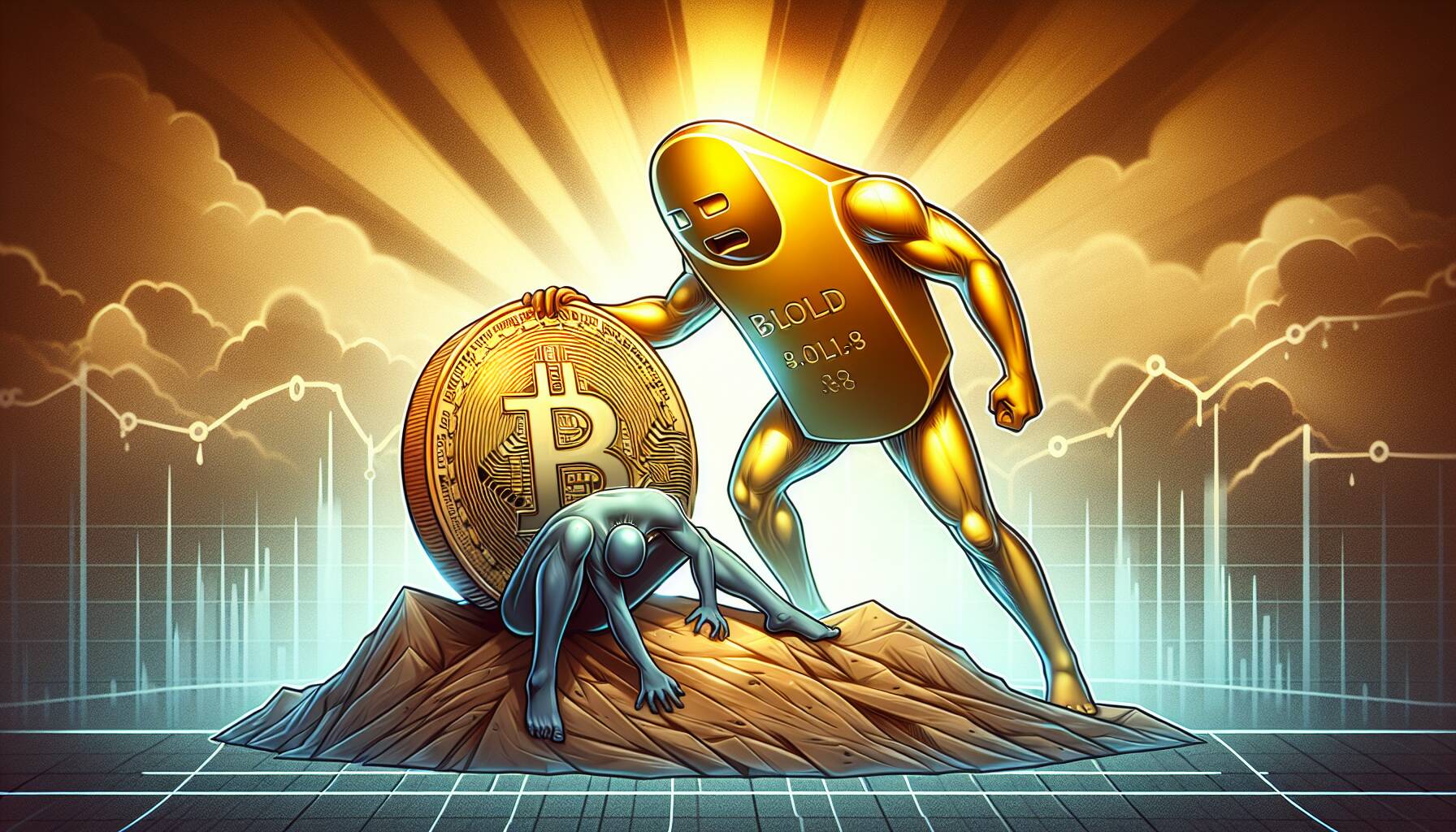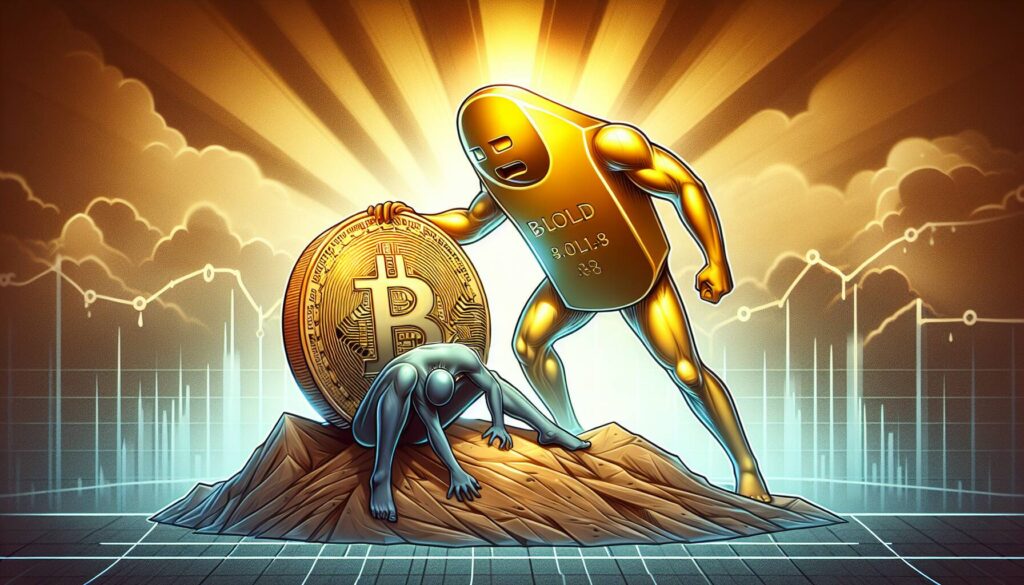In a recent analysis, JPMorgan has expressed skepticism about Bitcoin’s ability to tap into the safe-haven investment flows that have historically benefited gold. This latest commentary from the financial giant raises critical questions regarding Bitcoin’s status as a reliable hedge against economic uncertainty. While Bitcoin has gained considerable attention in the investment community, it appears to be struggling to replicate the strong demand seen for gold during turbulent market conditions.
Meanwhile, discussions are heating up among traders and analysts, particularly regarding a potential surge in Bitcoin that some predict may see it mimic gold’s trajectory, possibly reaching values exceeding $150,000. This speculative sentiment comes alongside projections of gold nearing a striking $3,300 mark, as market dynamics continue to fluctuate.
“Will the United States pivot away from gold as a traditional safe haven in favor of Bitcoin? This question is gaining traction amidst evolving geopolitical landscapes and investor sentiment.”
As the market grapples with inflation concerns and liquidity challenges, the debate between Bitcoin and gold as investment choices intensifies. Investors are closely monitoring how these assets respond to global economic pressures, making this moment particularly significant for both cryptocurrency enthusiasts and traditional commodity advocates alike.

Bitcoin vs. Gold: Key Insights
The ongoing debate between Bitcoin and gold as safe-haven assets is taking center stage in today’s financial landscape. Here are some key points derived from recent discussions and analyses:
- JPMorgan’s Analysis:
- JPMorgan suggests that Bitcoin has not capitalized on safe-haven flows that have benefited gold.
- This indicates that Bitcoin’s role as a protective asset during market instability is still questioned.
- Bitcoin’s Growth Potential:
- Speculations about Bitcoin reaching over $150K due to its strong performance and investor interest.
- This growth could lead to a significant shift in wealth allocation among traditional investors.
- Geoeconomic Shifts:
- The possible transition of the United States from gold reserves to Bitcoin may signify a changing worldview regarding asset safety.
- This shift could have far-reaching implications for the global economy and investment strategies.
- Gold’s Resilience:
- Gold nearing a new record of $3.3K reflects its sustained value and trust among investors.
- The perception of gold as an inflation hedge remains strong, impacting how individuals safeguard their wealth.
- Market Volatility and Liquidity:
- Both Bitcoin and gold serve as responses to market volatility, but their liquidity dynamics differ significantly, affecting trading strategies.
- Understanding these differences is crucial for investors when assessing risk management and asset allocation.
These developments in Bitcoin and gold dynamics highlight the evolving nature of financial strategies and the importance of staying informed to make educated investment decisions.
A Comparative Analysis of Bitcoin and Gold’s Role in Economic Uncertainty
The recent discourse surrounding the roles of bitcoin and gold in the current economic climate reveals sharp contrasts in how each asset is perceived as a safe-haven investment. According to a report from JPMorgan, bitcoin has yet to capitalize on safe-haven flows that typically bolster gold during times of financial distress. This highlights a significant competitive disadvantage for bitcoin; despite its growth and market enthusiasm, it has not established itself as a go-to refuge for investors seeking stability.
In contrast, gold continues to shine as a reliable store of value. The Block notes that this allure has spurred speculation that prices for bitcoin could imitate gold’s upward trajectory, potentially surpassing $150,000 as cryptocurrency enthusiasts maintain a bullish outlook. However, the underlying question centers on whether bitcoin will truly evolve to match gold’s historic reliability as an inflation hedge and liquidity source.
Bitcoin’s relatively novel status means it may attract a demographic eager for growth and technological innovation, while gold remains favored by conservative investors who prioritize stability and tradition. This divergence creates a fascinating market dynamic: those who are seasoned in investment strategy are likely to remain loyal to gold, while younger, tech-savvy investors could embrace bitcoin, seeing it as part of a modern portfolio. Additionally, unexpected movements in gold prices, like the predictions of a ‘blow-off top,’ could further complicate bitcoin’s narrative, potentially siphoning interest away from cryptocurrency and drawing it back to the shimmering allure of precious metals.
For policymakers and financial analysts, this contrast presents both opportunities and challenges. As they observe these trends, the potential shift towards bitcoin as a mainstream investment could disrupt conventional market behaviors. Conversely, this shift poses risks for those holding traditional assets, as the increasing acceptance of bitcoin may lead to higher volatility in the short term. In a world where market sentiment can shift with breaking news and economic indicators, individuals and institutions must remain agile to navigate these complexities effectively.

















